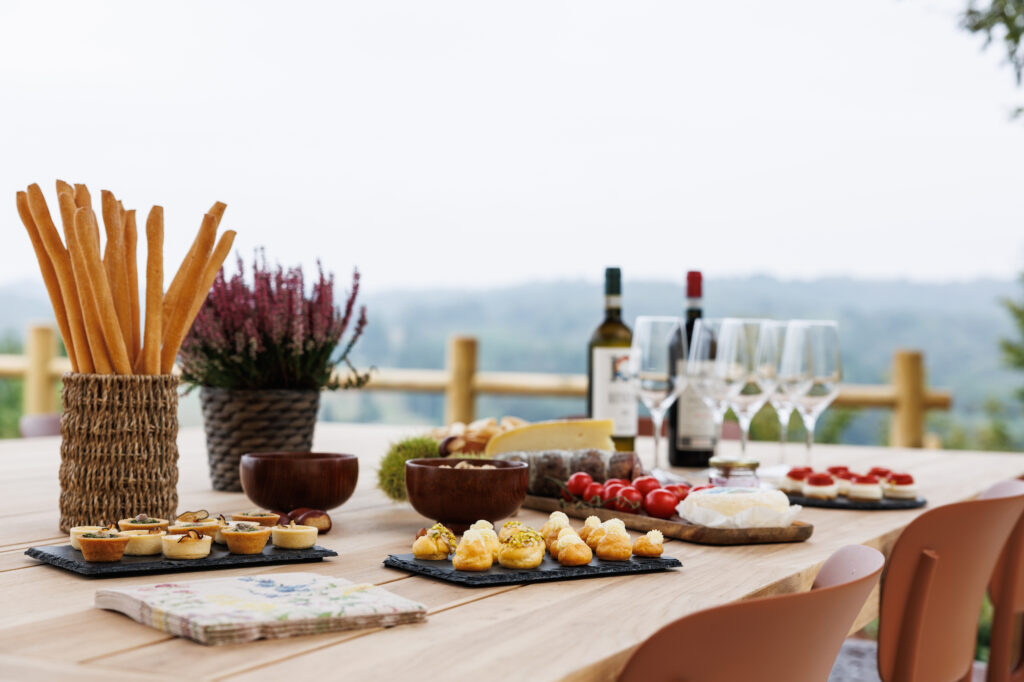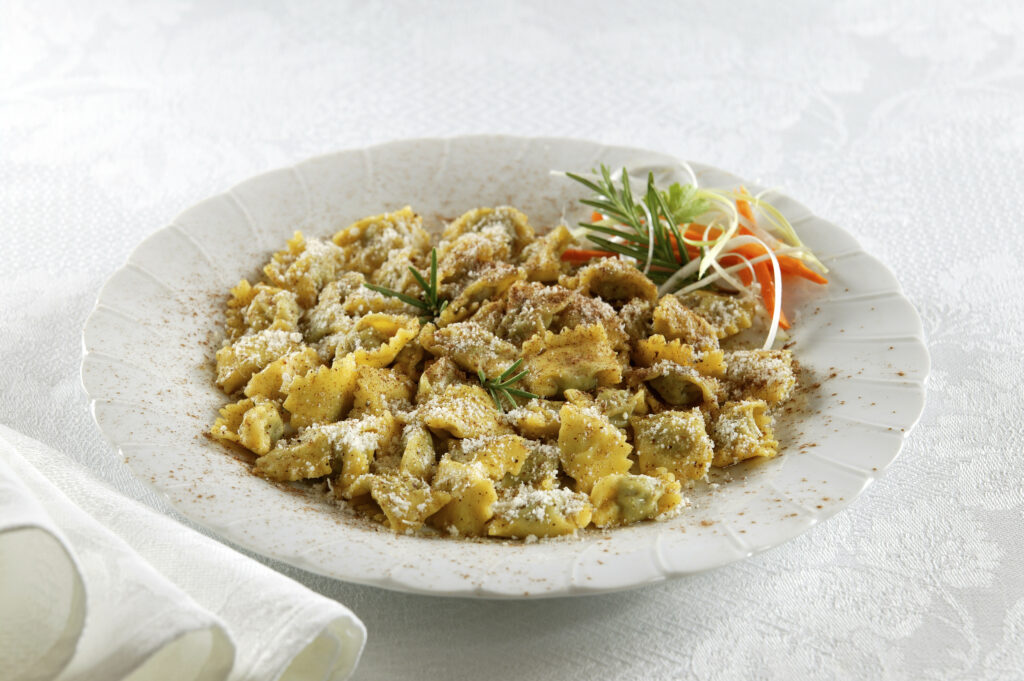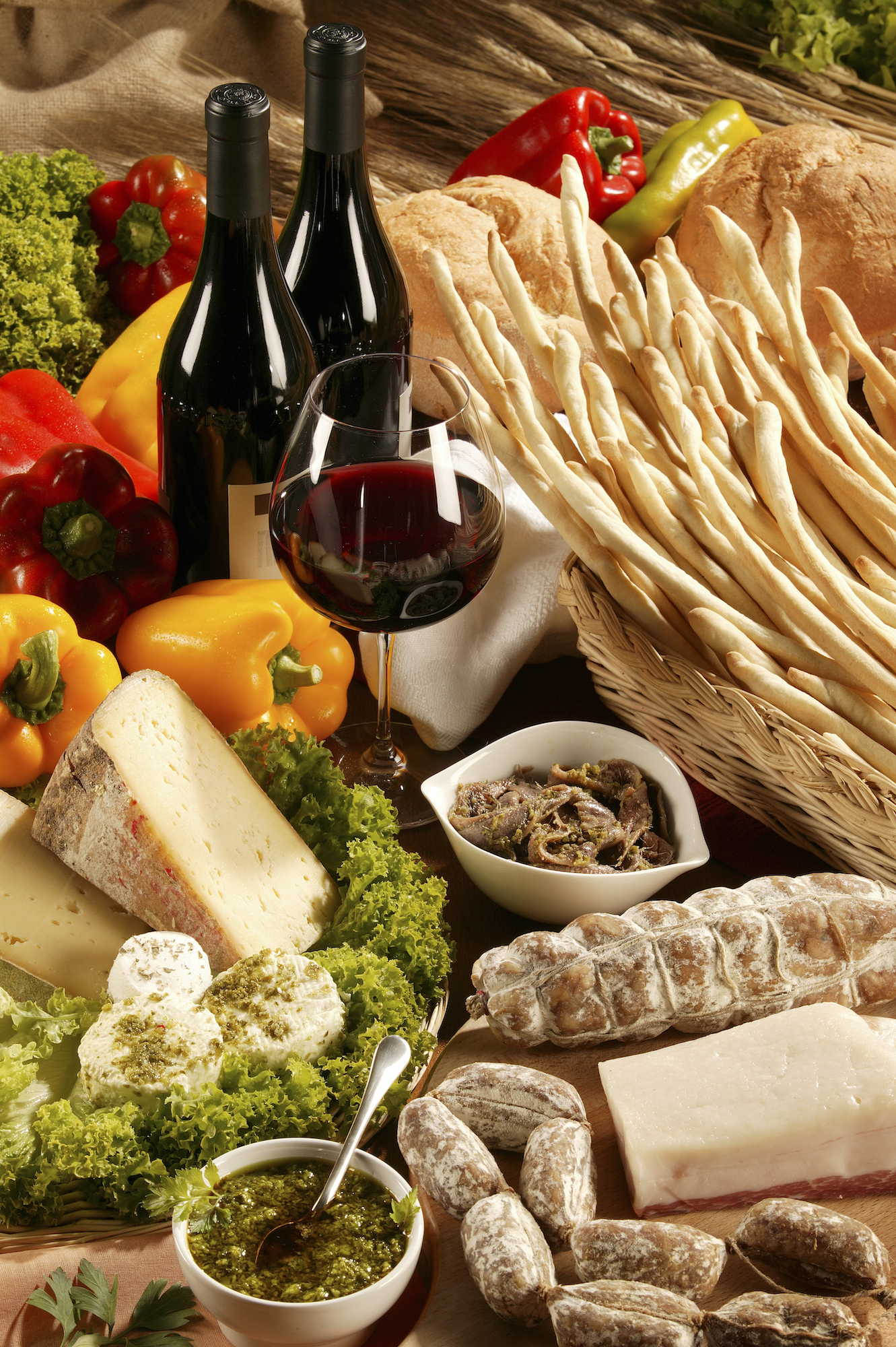
There’s an art to pairing a pasta shape with the perfect sauce, and when you source fresh and hyper-local ingredients, culinary magic happens.
But if you love Italian food, you already knew that.
When you travel to Italy, there’s a deeper meaning behind every meal that you can immediately feel, but you can’t easily explain.
Whether you’ve heard of the Slow Food movement in Italy and are wondering what that means, or you’re simply trying to understand the importance of food in Italian culture, we’re here to help.
First thing’s first: we’re gonna need you to have a seat and actually relax for once.
Can you do that? Eccellente, you’re off to a good start.
The Importance of Food in Italian Culture
The Slow Food movement in Italy does a great job embodying just how much food means to Italians.
Elsewhere on the blog, we’ve written about the Slow Food movement’s origins and global impact, but here’s the condensed version.
Slow Food is a political, social, and cultural movement that promotes:
- Preservation of traditional local cuisine.
- Sustainability and the careful use of locally sourced ingredients.
- Small businesses ranging from restaurants to farms to artisan food producers.
The movement’s official slogan?
Good, Clean, and Fair Food for All.
It’s hard to argue with that!
But to explain what that looks like in practice, we needed help. So we asked our Italian partners in the Piedmont region what Slow Food means to them. Here’s some of what they said:
“The Slow Food philosophy in Piedmont is a celebration of culinary traditions handed down through time, a journey through the rich tapestry of flavors that defines this picturesque region. The inhabitants of Piedmont, deeply rooted in their heritage, have embraced the Slow Food movement to preserve and appreciate the authenticity of their gastronomic treasures.”
Some other themes that came up:
- Community: Slow Food in Italy is about taking the time to share stories and create authentic bonds with those around you – perhaps people you’ve known your whole life; perhaps some strangers from halfway around the world. Sitting with others as a multi-course meal slowly unfolds (and then lingering around the table with comfortably full bellies) removes you from the daily grind, brings down your barriers, and reminds you of what matters most.
- Ritual: Through a shared meal, you’re communing with people around you. And through the dishes themselves, you’re communing with regional heritage that’s been cherished for centuries. You’re keeping traditions alive, as well as rare varieties of produce, cheese, wine and other delights that could otherwise be lost in favor of industrialized food production. Together, these elements form a powerful ritual.
- Wisdom: Some techniques can’t be automated, rushed, or guessed – they must be passed from person to person and mastered through practice and careful attention. Cooking traditional dishes is one of these things. Whether you step into the kitchen and learn the secrets or simply savor the results, you’re connecting to the soul of a region… and to the human experience.
With values like these, of course local Italian food is life-changingly delicious.
The Best Food Region in Italy…

Speaking of life-changingly delicious food, where in Italy do you go to experience a meal like that? One where you’ll linger for hours laughing, sipping wine, and pausing to revel in the flavors you’ll experience?
The best food region in Italy is anywhere you can get a home-cooked meal from an Italian mamma.
We know, that’s not the answer you were looking for! But declaring any region of Italy “the best food region” is asking for trouble.
In every Italian region, province, and village, people carry a deep pride in their heritage – expressed through food – in a way that’s hard to imagine here in the USA.
That being said, we bring our Italy Yoga Adventure to the Piedmont region because it’s the birthplace of the Slow Food movement. Piedmont also offers truly incredible cuisine with a fraction of the tourist traffic of other regions, making it one of Italy’s most underrated foodie destinations.
And of course, there are our incredible hosts at the private villa in the Roero where you’ll spend six nights. They provided the inspiration and wisdom for this article!
The villa’s private kitchen is run by two “Italian mammas” (their words!) who bring a mother’s touch and generations of culinary wisdom to each meal you’ll slowly share with your small travel group.
You’ll also have the chance to step into the kitchen and roll up your sleeves as you learn local cooking techniques. Although you’ll barely scratch the surface of your teacher’s skills, you’ll return home with more than enough knowledge to host a truly memorable dinner party.
What’s on the (Slow Food) menu? We asked the Italian mammas…

Slow food in Italy relies on seasonal, locally sourced ingredients – often from endangered lineages!
Here are a few of the essential ingredients the Piedmontese Italian mamma chefs use to work Slow Food magic…
Cevrin di Coazze: A semi-soft cheese made from a mix of goat and cow’s milk, known for its melt-in-your-mouth texture, buttery hazelnut flavor, and hints of spice.
Asti Artichoke of Sorì: Piedmont’s sweet and tender artichoke variety, which has been celebrated for centuries in texts and through festivals, and can only be cultivated on specific slopes in the Asti province.
Nizza Monferrato Cardo Gobbo: This variety of celery-like cardoon is traditionally dipped in bagna cauda, a typical Piedmontese sauce made of hot oil, garlic, and anchovy.
Moscato Passito di Strevi: A sweet, aromatic white wine that ranks among the oldest varieties in Piedmont. It’s made using the best grapes from the town of Strevi’s annual moscato harvest.
Wondering how ingredients like these come together? We wrote about 6 Essential Piedmontese dishes – but don’t read this one if you’re hungry!
(Slow, Exquisite, Meaningful) Adventure Awaits!
At The Travel Yogi, we don’t think food tours and wellness practice are contradictory. We say they’re better together.
On the Italy Yoga Adventure, when you’re not savoring home-cooked meals that embody the philosophy of the Slow Food movement in Italy, you’ll cycle, stroll, learn from local cheese and winemakers, and of course, practice yoga in the villa’s outdoor shala.
Ready to ground yourself in wellness as you follow tradition deep into the Italian countryside?

